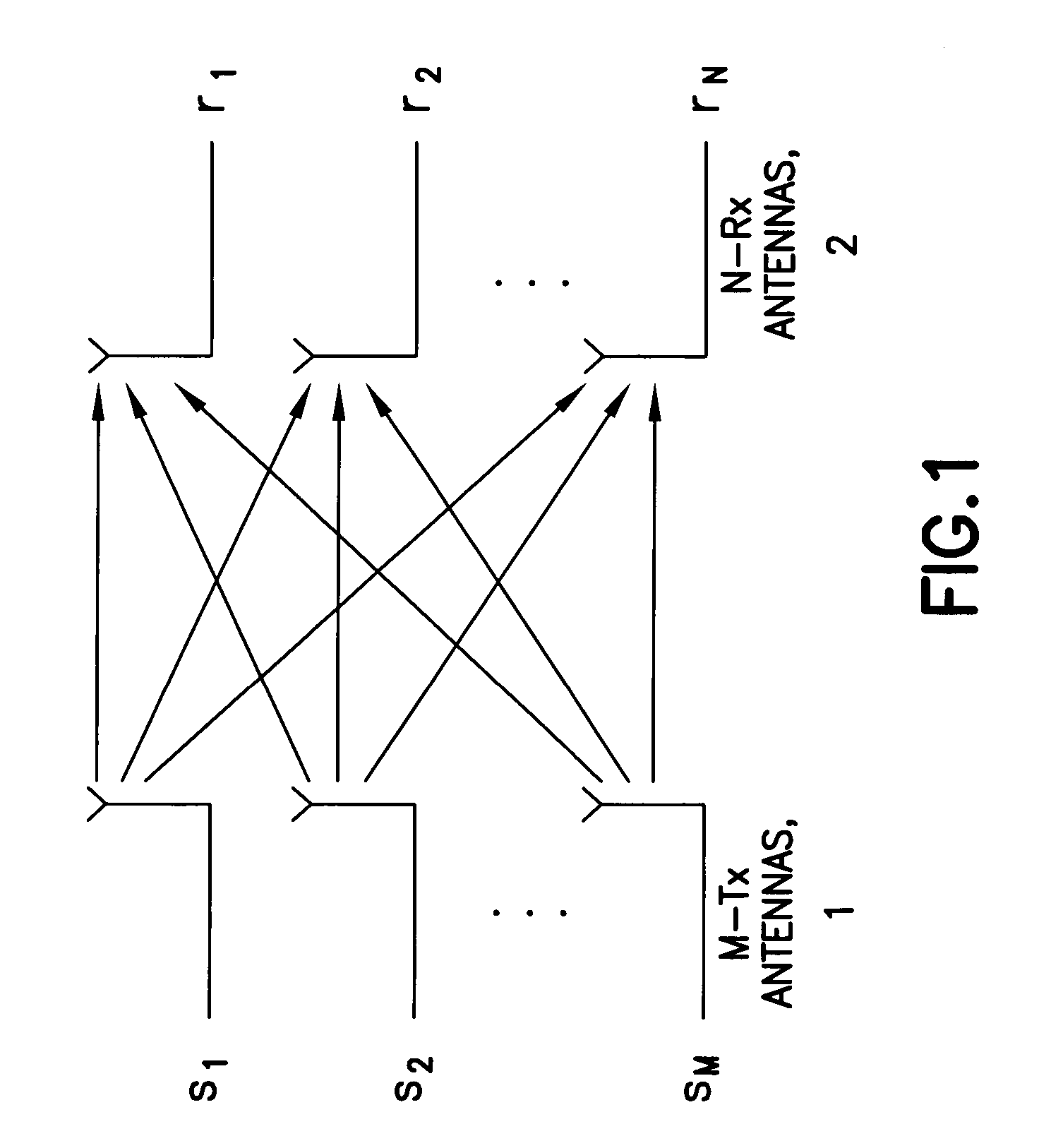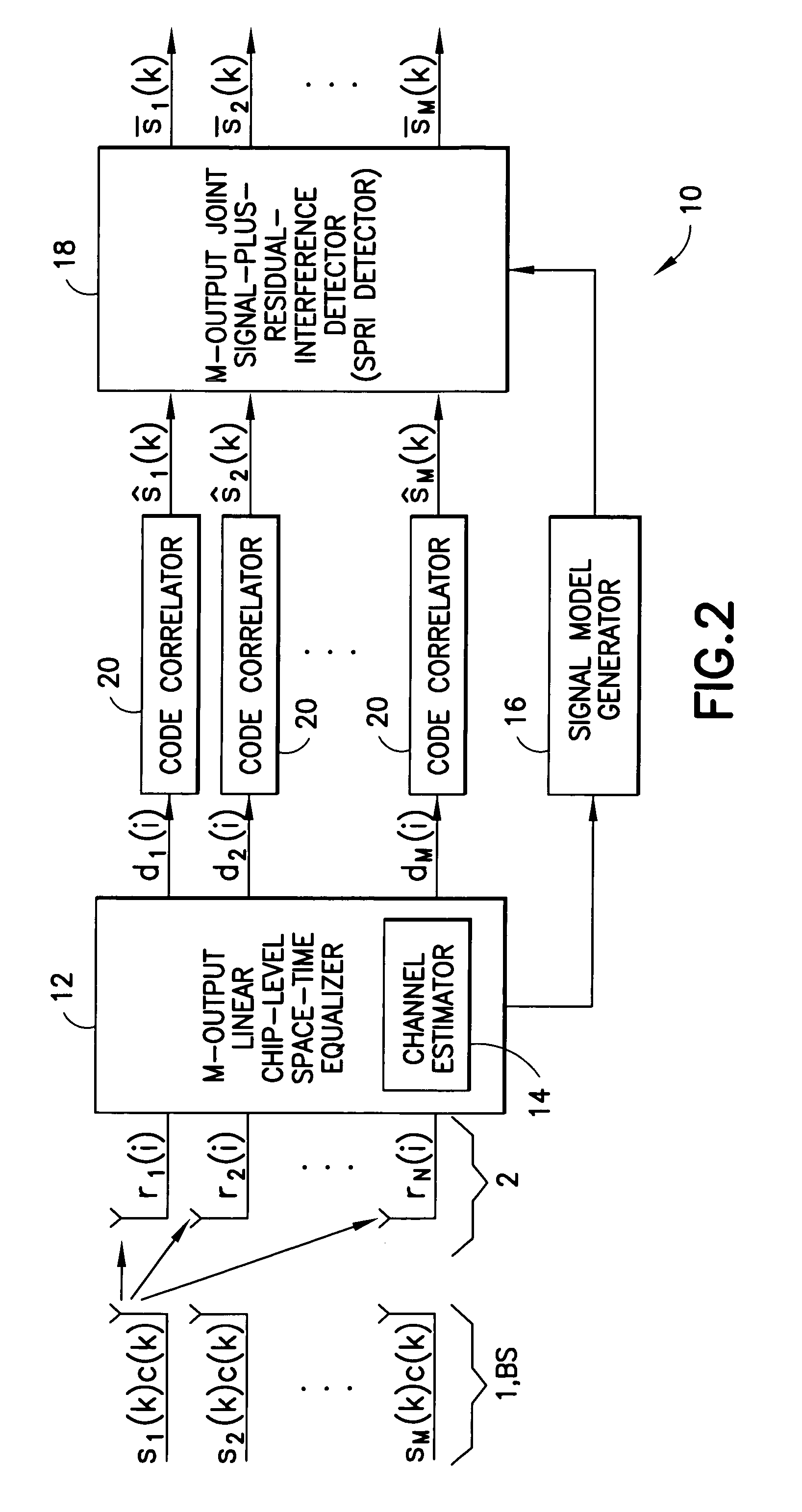Method and apparatus providing an advanced MIMO receiver that includes a signal-plus-residual-interference (SPRI) detector
- Summary
- Abstract
- Description
- Claims
- Application Information
AI Technical Summary
Benefits of technology
Problems solved by technology
Method used
Image
Examples
Embodiment Construction
The foregoing and other problems are overcome, and other advantages are realized, in accordance with the presently preferred embodiments of these teachings.
The presently preferred embodiment of this invention combines classical estimation techniques with statistical (e.g., Bayesian) estimation to overcome the shortcomings of the conventional MIMO receiver space-time equalization or maximum-likelihood techniques.
An improved MIMO receiver in accordance with this invention for receiving an M-by-N MIMO channel includes an N-antenna array at the receiver (preferably diversity antennas or correlation antennas), an M-output space-time equalizer (preferably linear minimum mean-square error (LMMSE) criterion based) and M correlators, forming a space-time equalizer. The improved MIMO receiver further includes, in accordance with an aspect of this invention, a signal-plus-residual-interference (SPRI) detector. During operation of the SPRI detector the MIMO receiver generates signal models...
PUM
 Login to View More
Login to View More Abstract
Description
Claims
Application Information
 Login to View More
Login to View More - R&D
- Intellectual Property
- Life Sciences
- Materials
- Tech Scout
- Unparalleled Data Quality
- Higher Quality Content
- 60% Fewer Hallucinations
Browse by: Latest US Patents, China's latest patents, Technical Efficacy Thesaurus, Application Domain, Technology Topic, Popular Technical Reports.
© 2025 PatSnap. All rights reserved.Legal|Privacy policy|Modern Slavery Act Transparency Statement|Sitemap|About US| Contact US: help@patsnap.com



